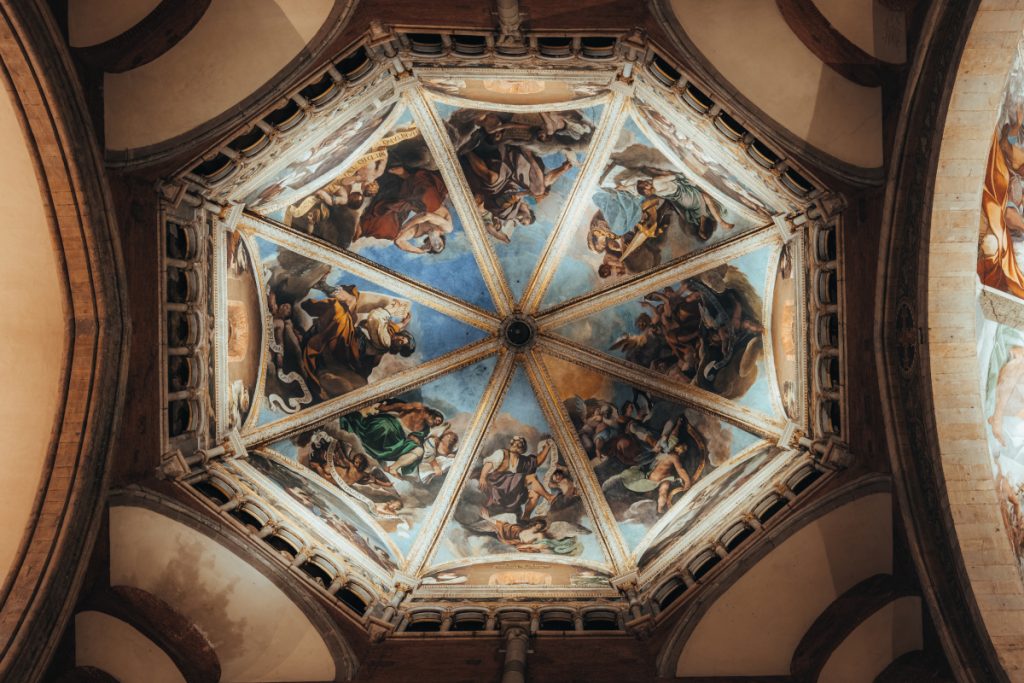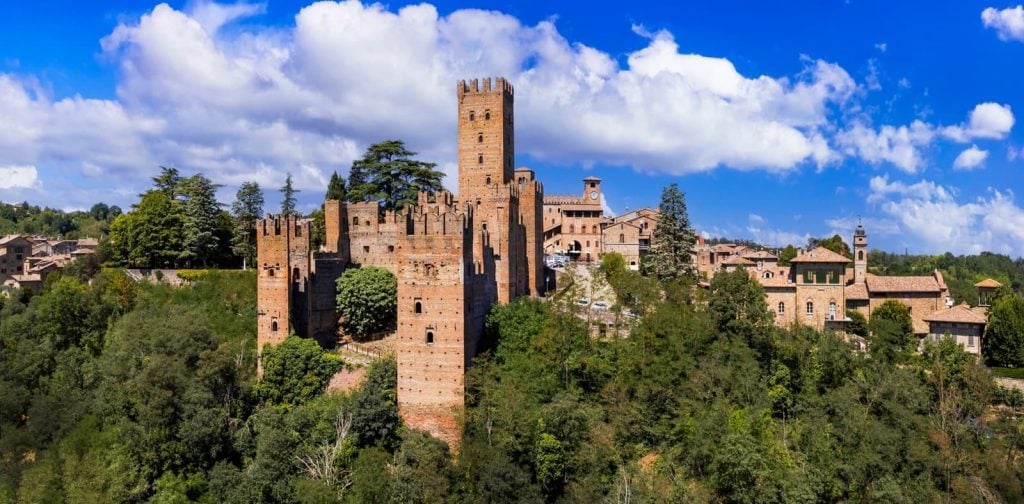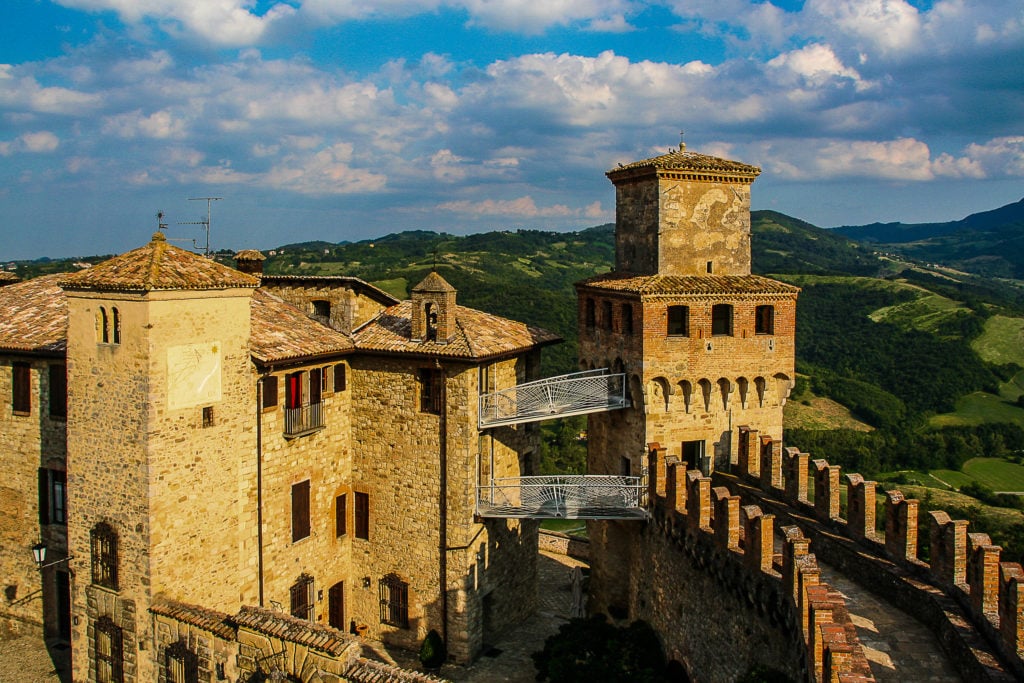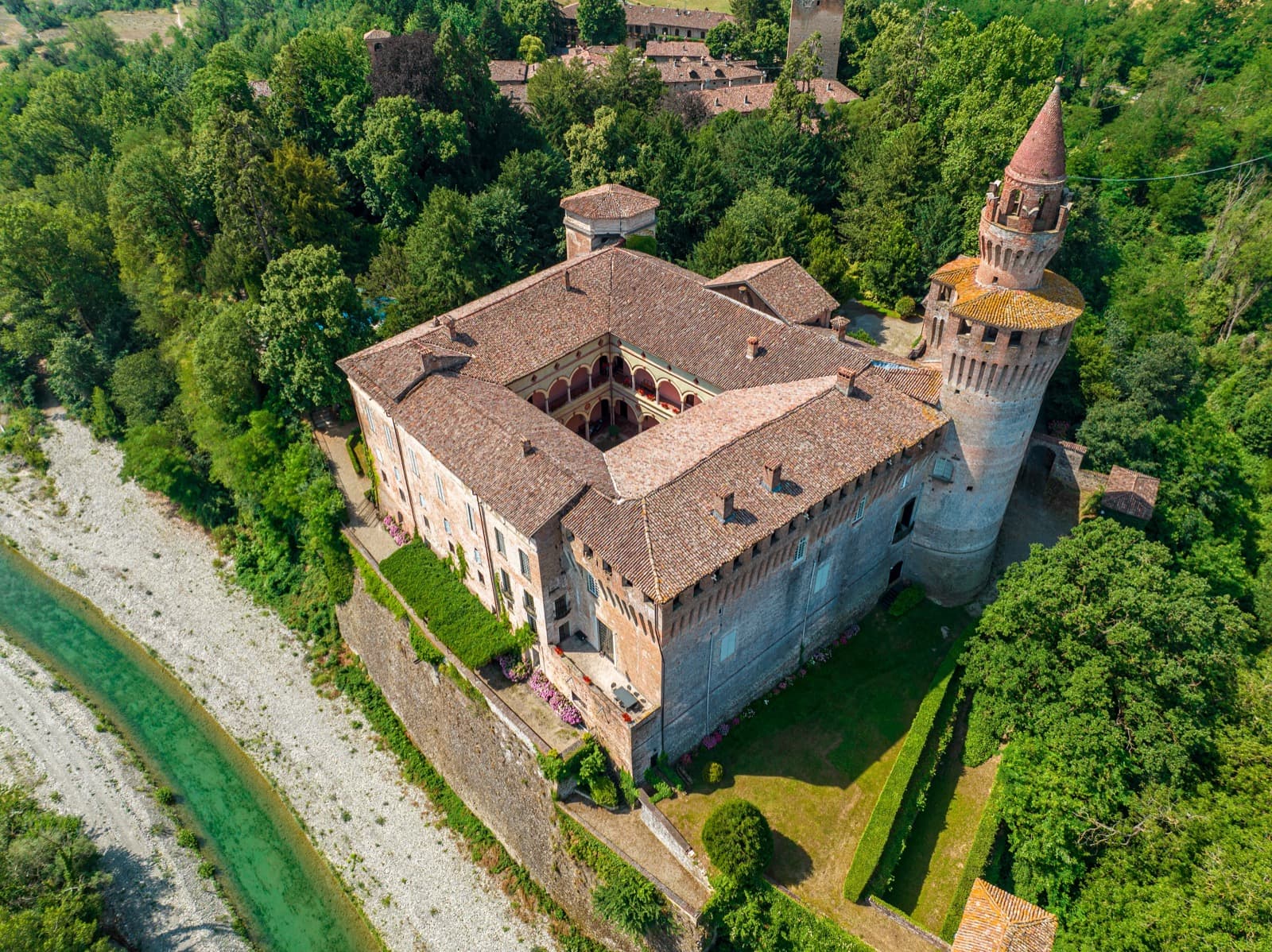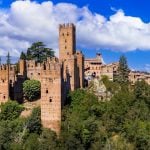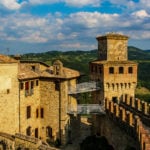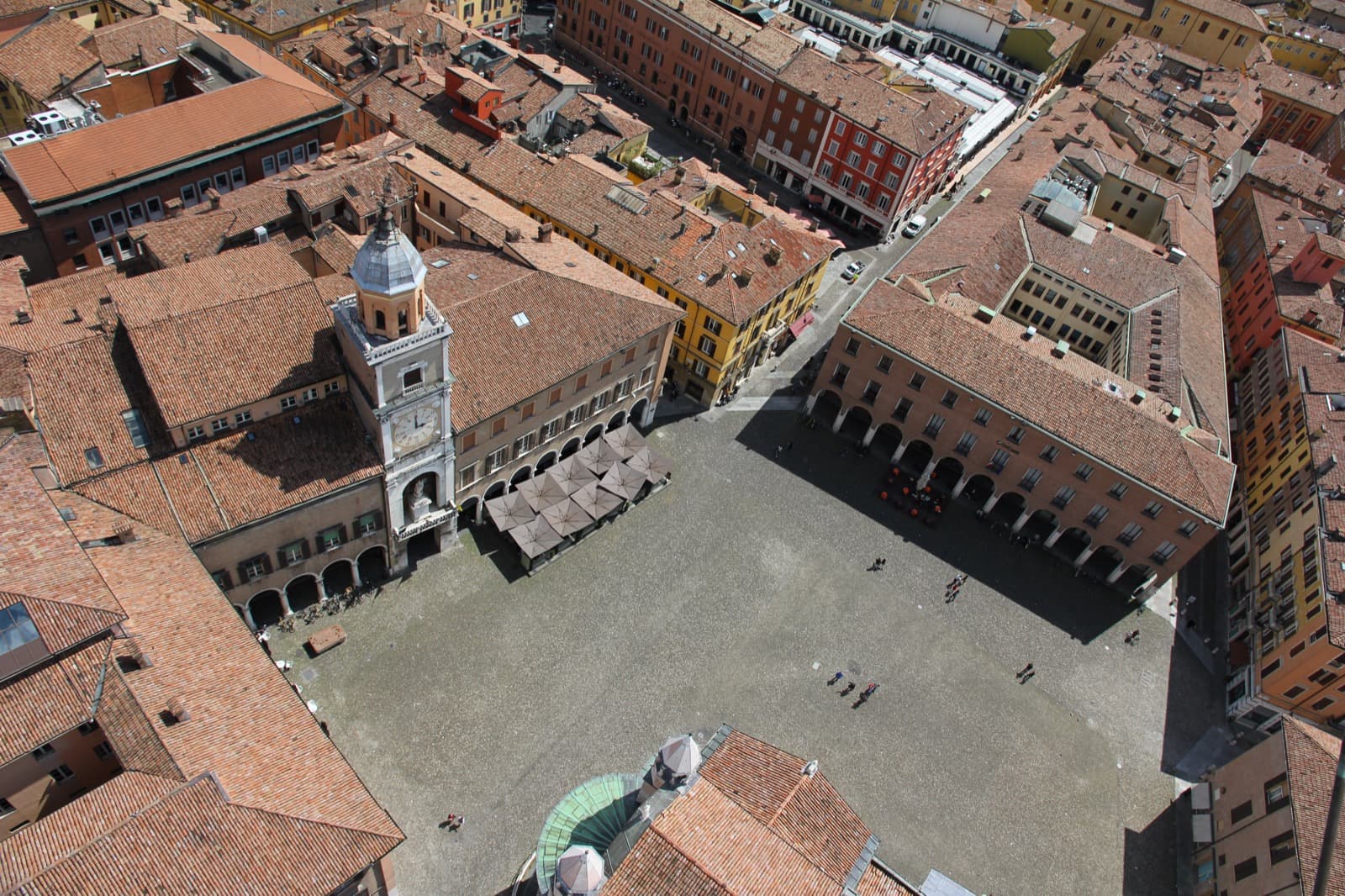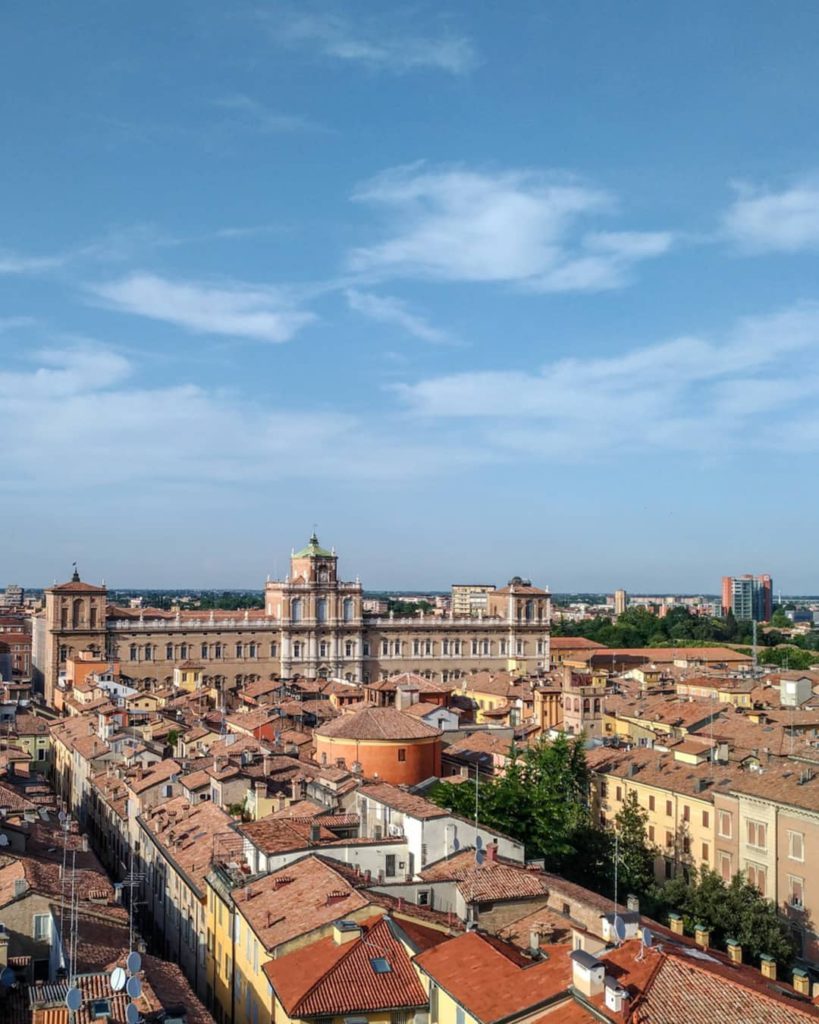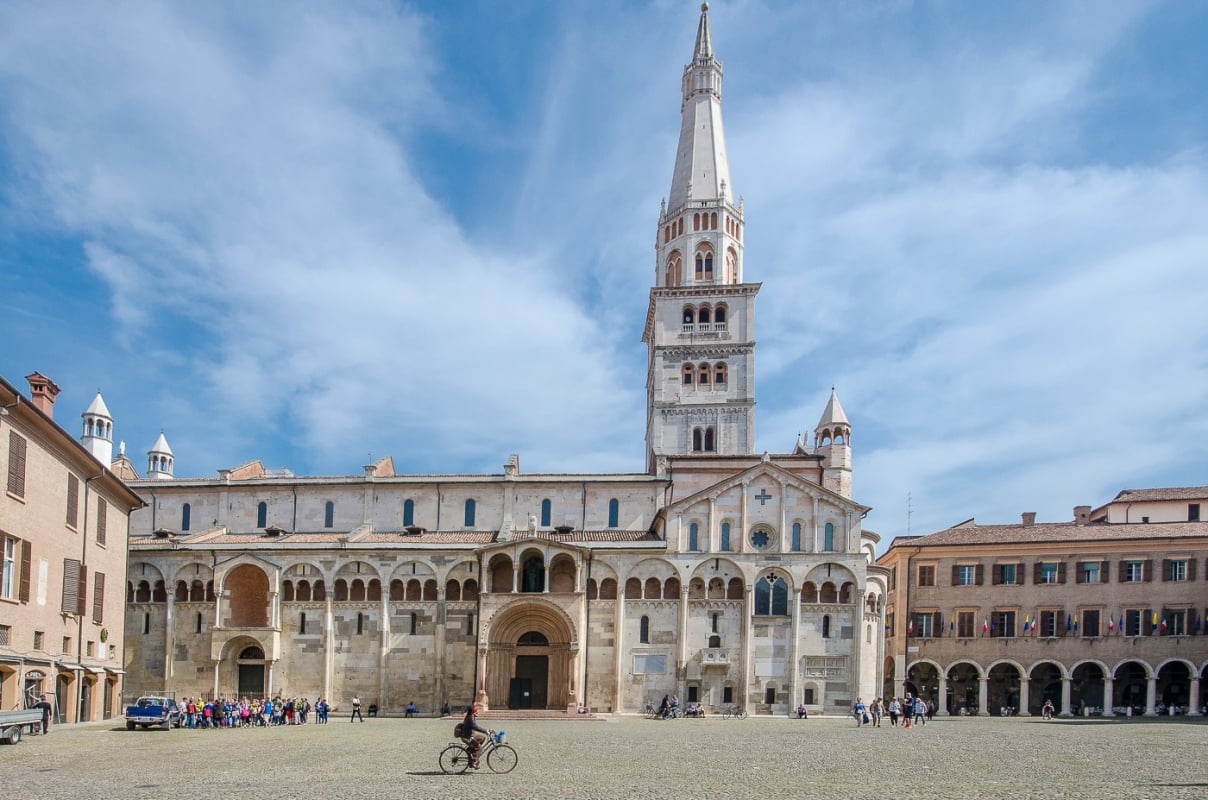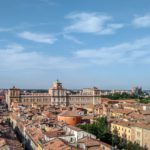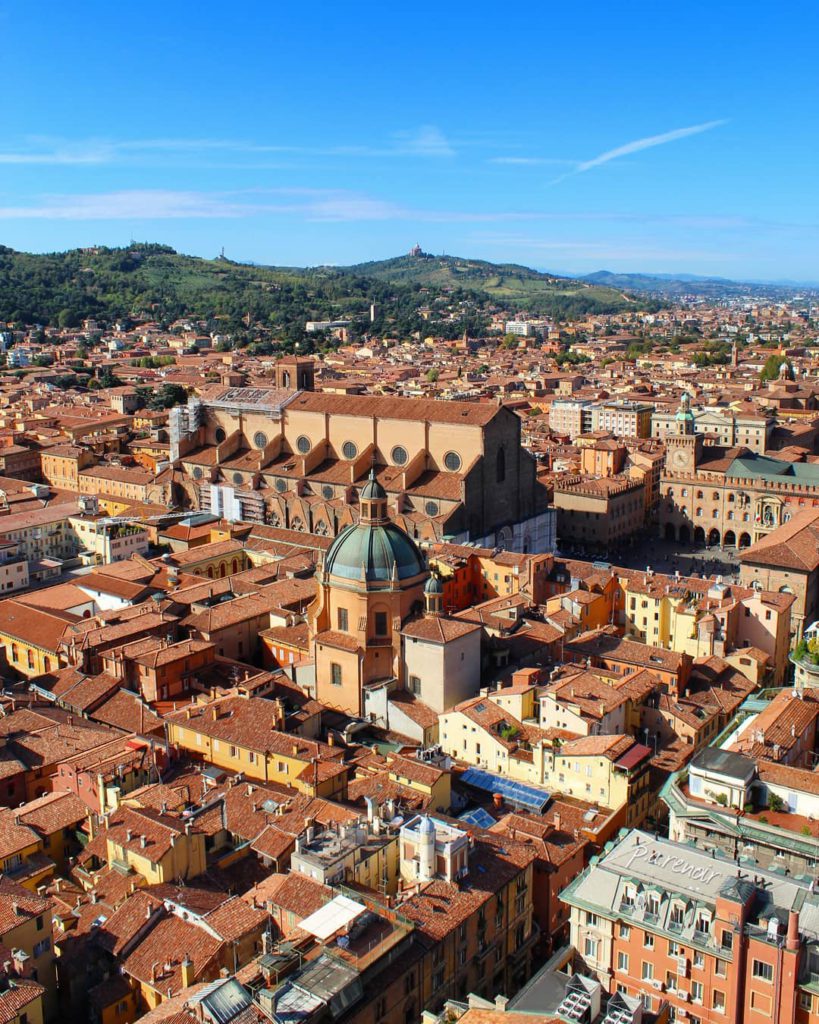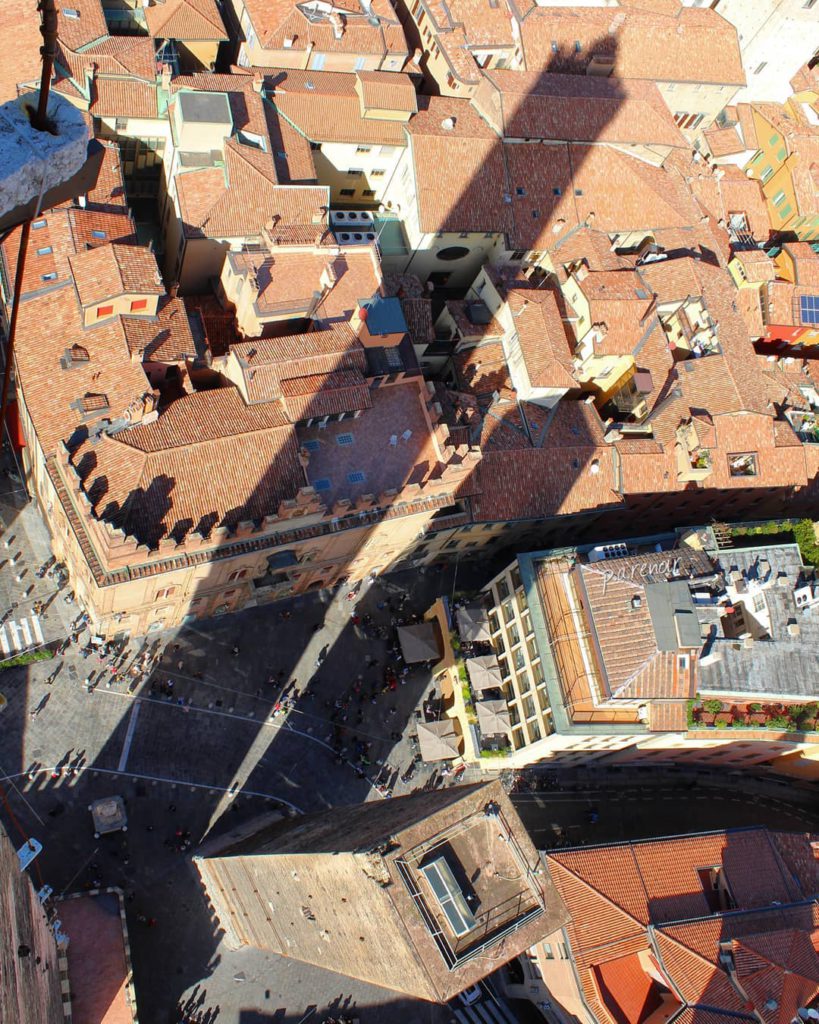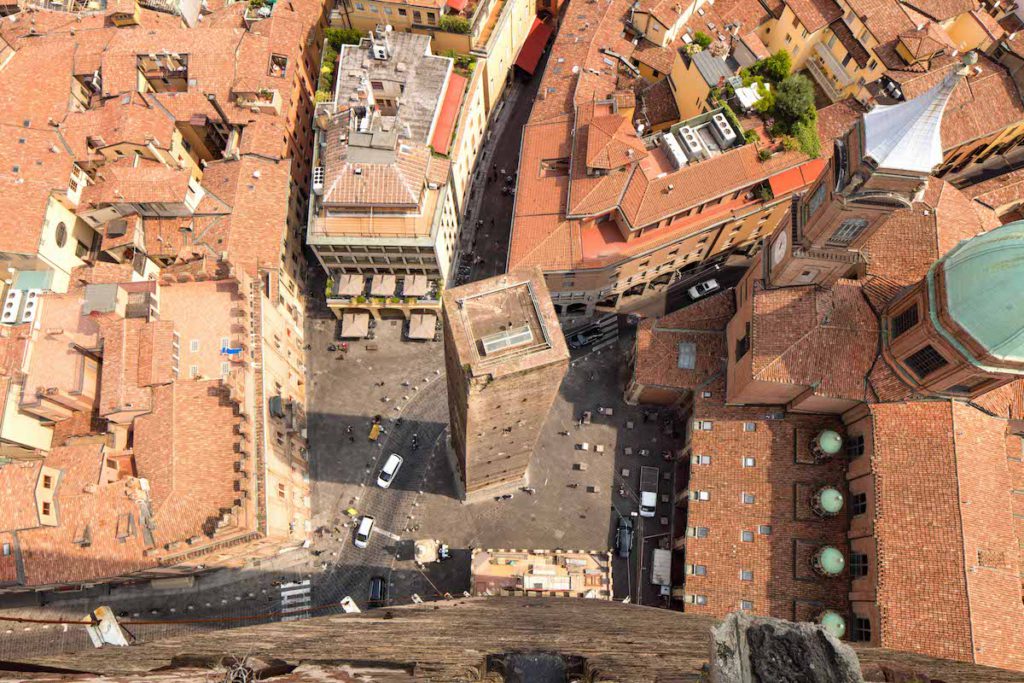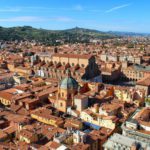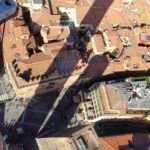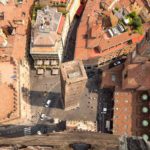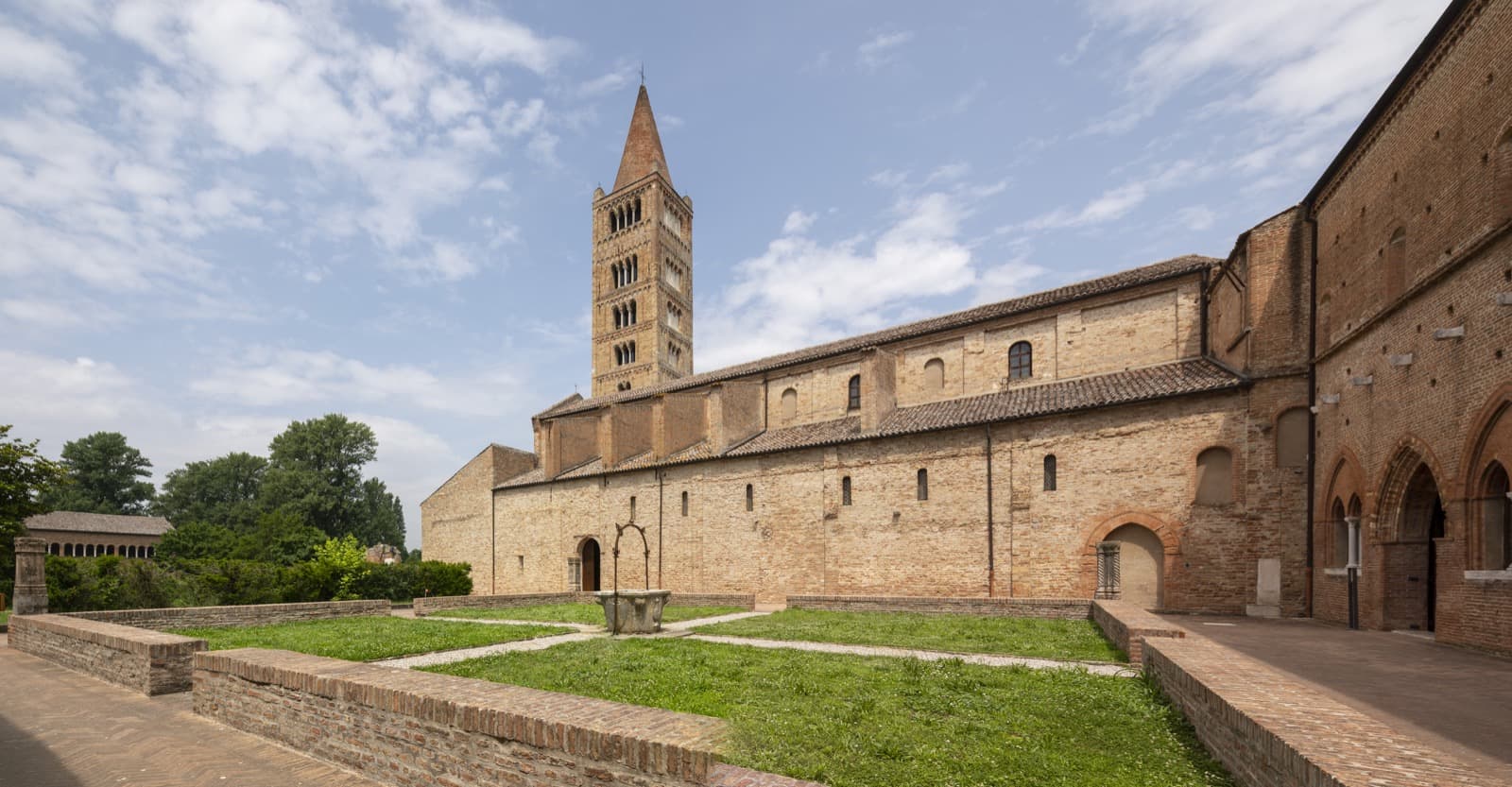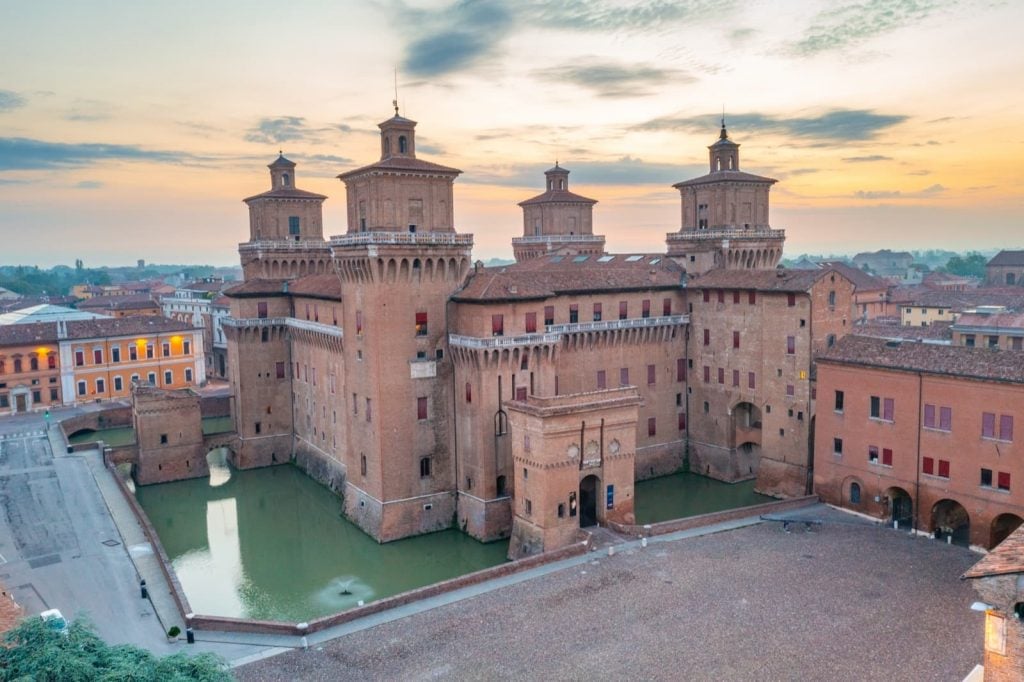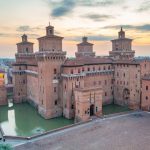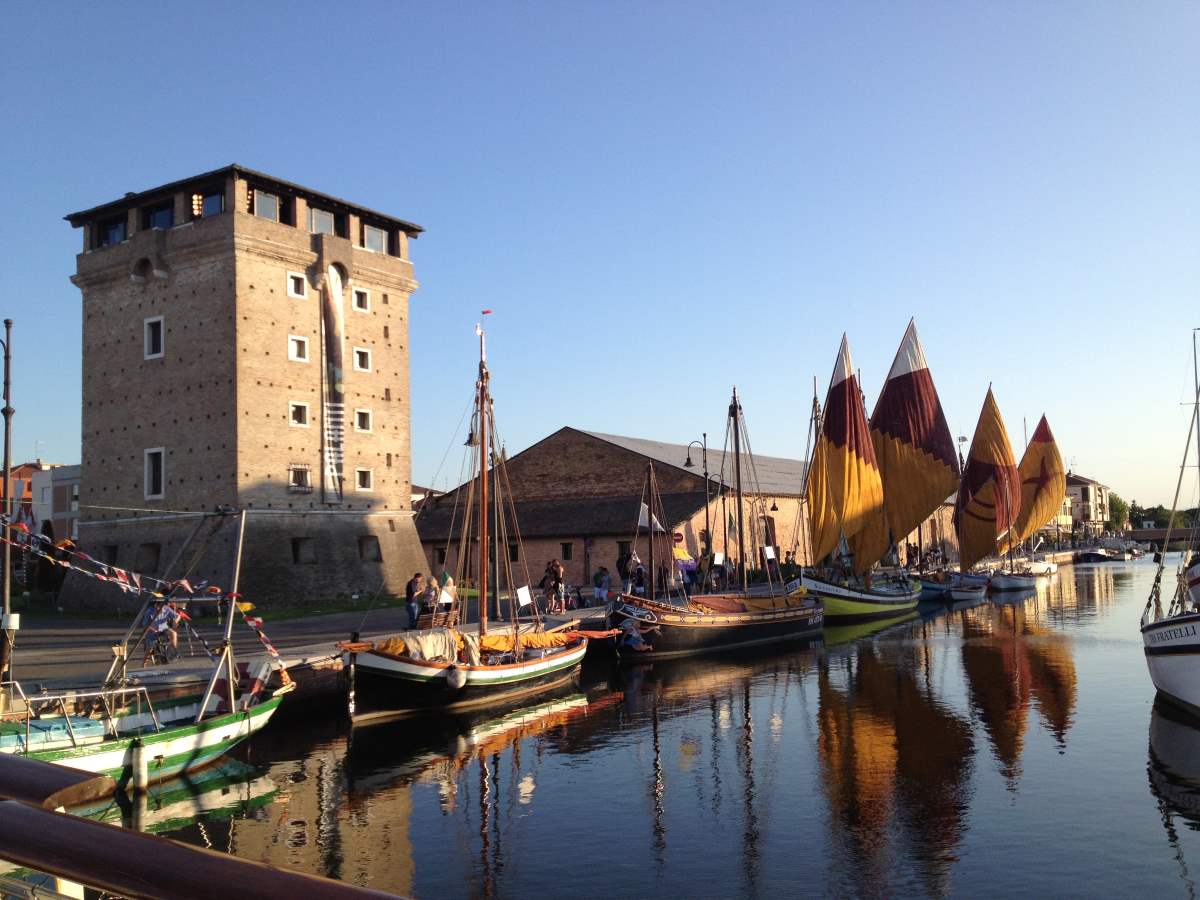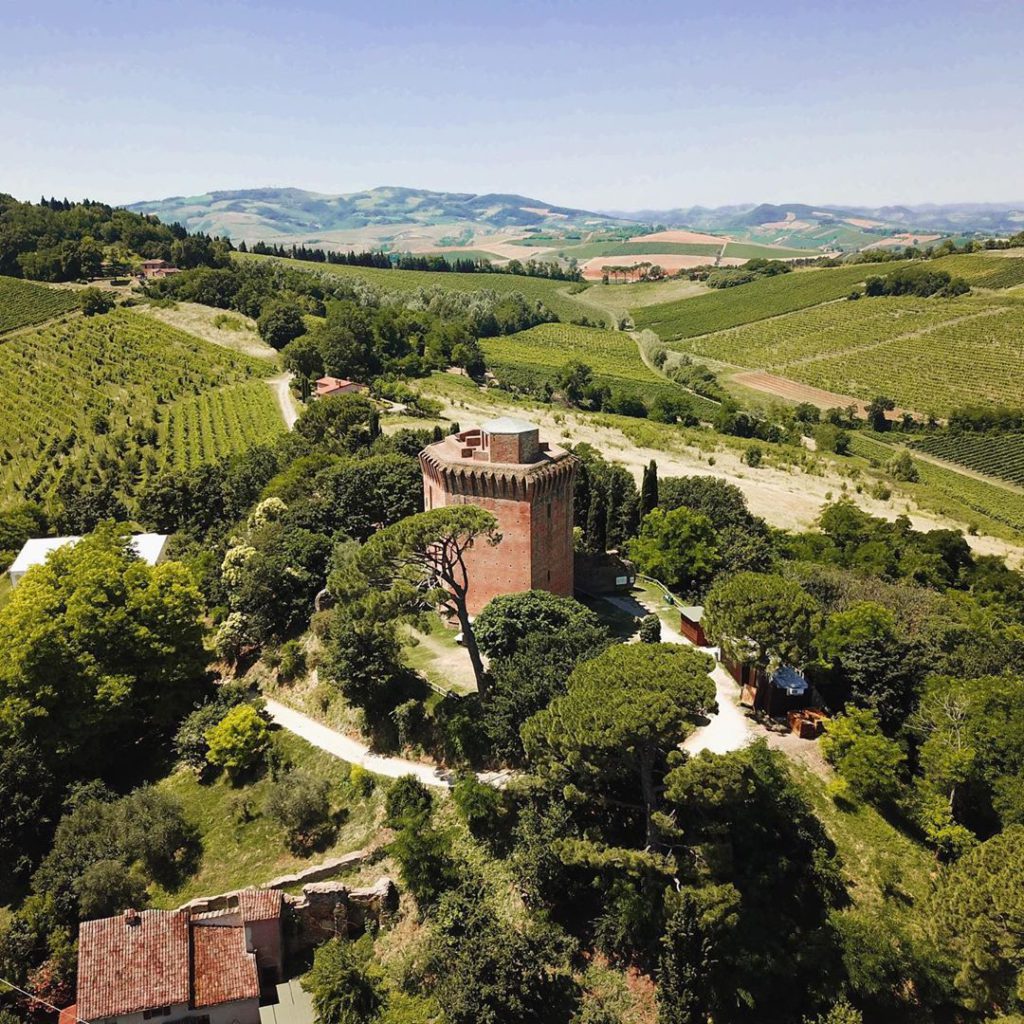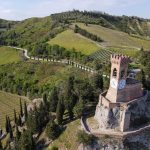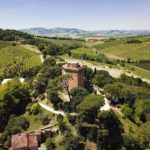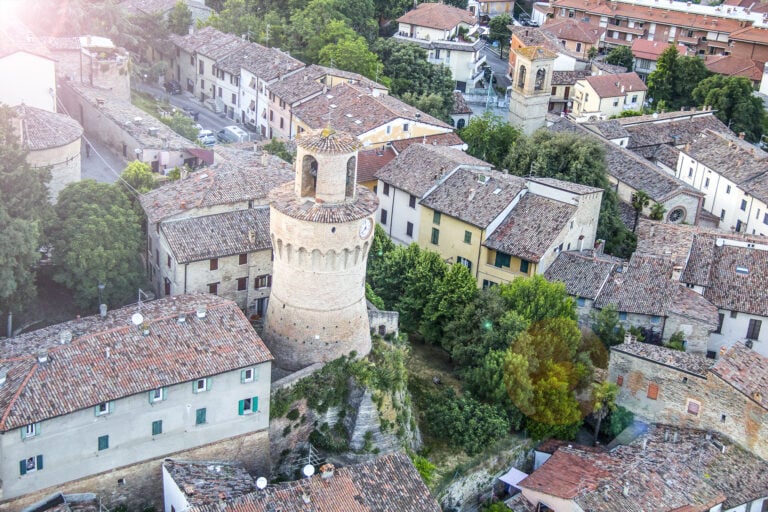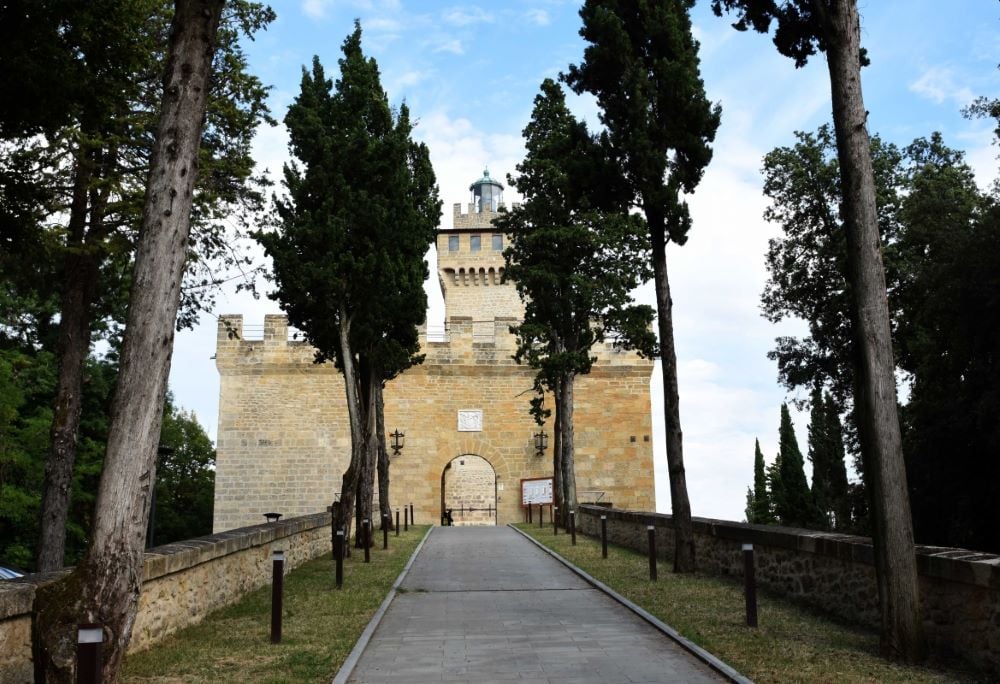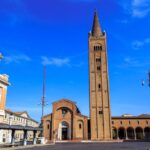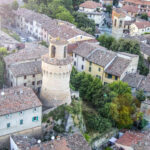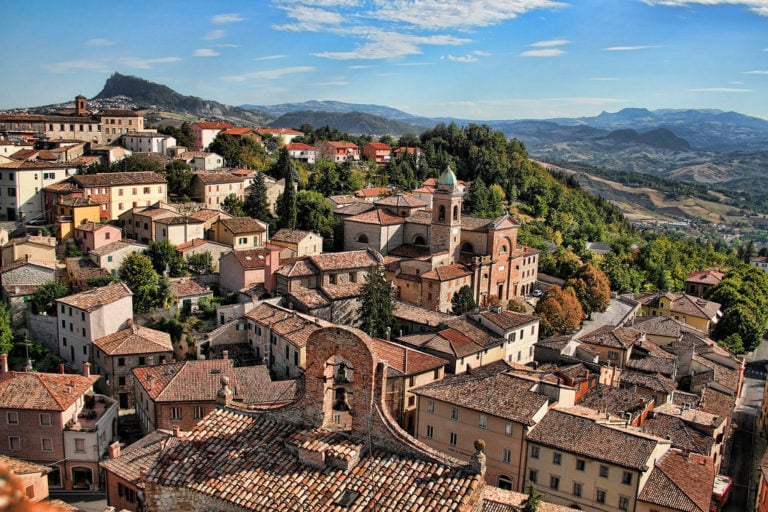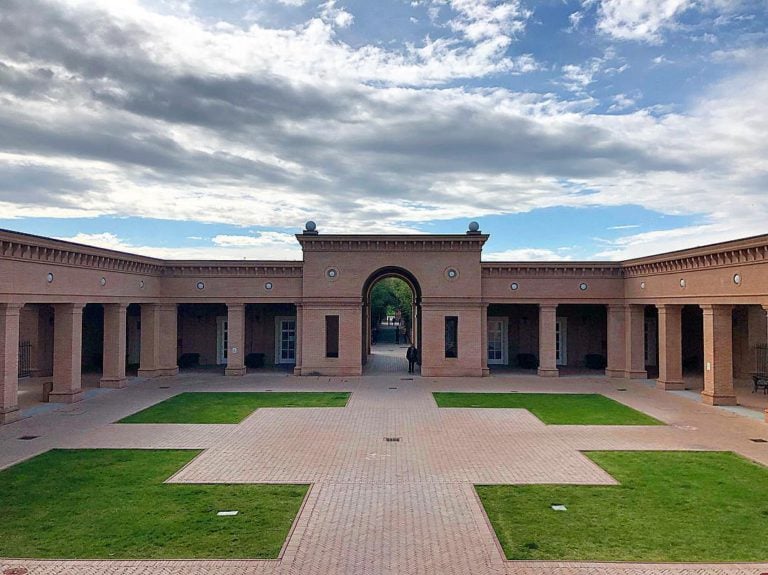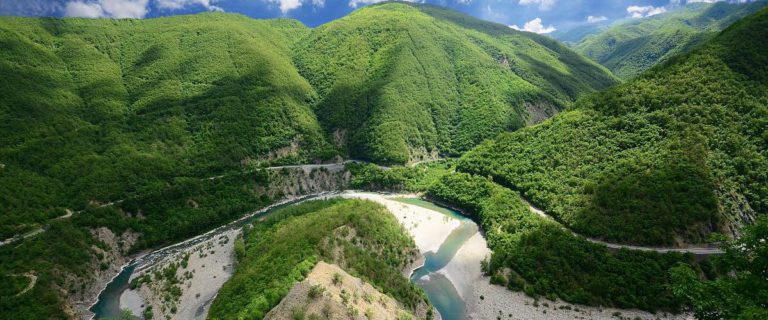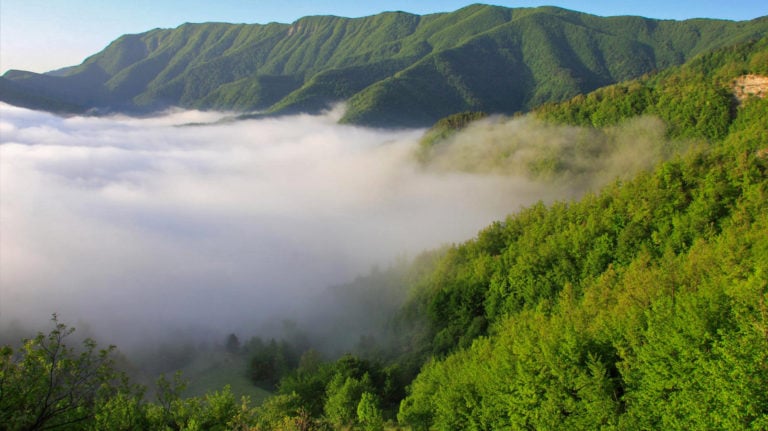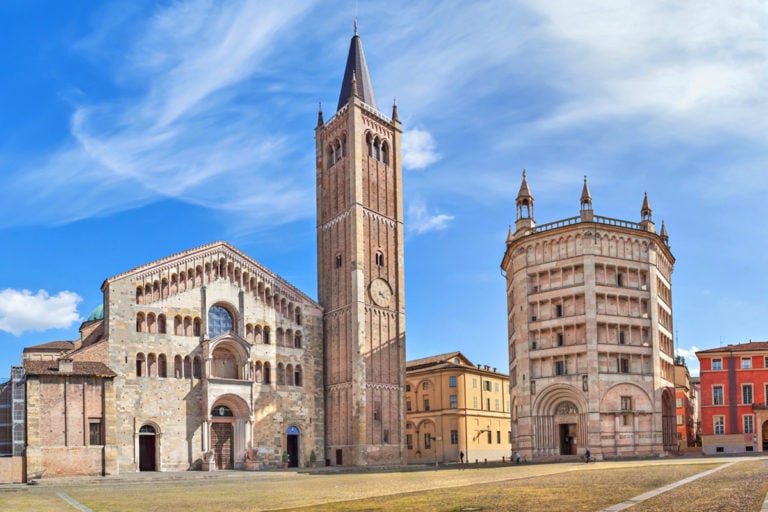Do you enjoy observing cities and landscapes from the top of towers and bell towers? Then this article is just right for you. Here’s a selection of places in Emilia Romagna not to be missed if you love to immortalize landscapes from unique perspectives – and you’re not afraid of heights!
For your convenience, we have divided them by province.
Piacenza
Piacenza, Cattedrale di Santa Maria Assunta e Santa Giustina, Cupola affrescata da Morazzone e Guercino, Archivio Immagini Comune di Piacenza
Castell'Arquato (PC) Rocca Viscontea Ph. leoks via Shutterstock
Vigoleno-Ph.giulosi
Castello di Rivalta Ph. Naeblys via shutterstock solo per uso editoriale
Dome of the Cathedral of Santa Maria Assunta and Santa Giustina | Piacenza
As we have already mentioned in a previous article, it is now possible to climb up to the dome of Piacenza Cathedral, frescoed by Guercino.
This experience will give you the opportunity to see the frescoes up close like never before. Before descending, you can also take some photos of the square in front of the Greek cross rose window on the façade.
Until 31st December 2025, you can purchase a combined ticket with access to the dome by Pordenone in the Church of Santa Maria di Campagna.
Tower of the Visconti’s Fortress | Castell’Arquato
The Rocca Viscontea di Castell’Arquato was built in the 14th century in a dominant position, overlooking the entire landscape. From the top of the tower, which has always been an excellent observation point, you can enjoy an extraordinary view of the unusual shape of the fortress and the valley, and experience the feeling of being transported to the set of the film Ladyhawke, which was shot here in 1985.
Keep of Vigoleno | Vernasca
In the small medieval village of Vigoleno, one of Italy’s most beautiful villages and awarded the Touring Club’s Orange Flag, you can visit the castle’s square keep. It is a perfect vantage point, allowing you to admire the surrounding landscape by peering through the ancient loopholes and between the Ghibelline battlements.
Tower of Rivalta Castle | Rivalta
Rivalta Castle offers visitors the chance to explore its distinctive and elegant 15th-century cylindrical tower, which offers splendid views of the surrounding area, the scene of one of the battles of the Second Punic War in which Hannibal took part.
Reggio Emilia
Tower of San Prospero | Reggio Emilia – visits to the tower are currently suspended
The bell tower of San Prospero, a fine example of Reggio Emilia Renaissance architecture, is one of the symbols of the city. It is unique for its unusual construction (clad in sandstone, a stone that is very common in the province of Reggio Emilia but not particularly suitable for outdoor use), its octagonal shape and its incompleteness.
After a long period of renovation, the tower has been restored to its former glory. Every Sunday, visitors can climb to the top and admire a unique view of the city.
Modena
Modena, view from Ghirlandina tower Ph. pibi1967
Modena, view of Ducal Palace from Ghirlandina tower Ph. Alberto Berselli
Modena, Duomo e Torre della Ghirlandina | Credit: Claudio Minghi
Ghirlandina Tower | Modena
Built as a bell tower but of great importance to the city, the Ghirlandina is the symbol of Modena, which can be easily recognised from anywhere around the city.
At over 89 metres high, it towers over Piazza Grande next to the Cathedral, with which it shares the title of UNESCO World Heritage Site.
Upon entering the tower, you can visit the so-called Stanza dei Torresani, once inhabited by the tower’s custodians, and then reach the top, where you can enjoy a panoramic view of the entire centre of Modena.
Access to the tower is by reservation only. It is also possible to purchase a combined ticket that includes the Historical Rooms of the Town Hall, available only on specific dates throughout the year.
Bologna
Asinelli Tower | Bologna – currently closed for works in the area
Today, only 20 towers are left out of the over 100 that Bologna boasted in the Middle Ages, including the famous Two Towers, the Garisenda and the Asinelli. In the past, they served important military functions and their grandeur was directly proportional to the prestige of the family that owned them.
Be aware that if you decide to go up the Asinelli tower, there are 498 steps to climb: you will reach a height of 97.2 metres, where the slope of over 2 metres is clearly visible.
From the terrace of the tower, you will see Bologna as the soldiers on guard once did, and you can enjoy an unusual city skyline.
Bell Tower of San Pietro Cathedral | Bologna
On Saturdays and Sundays, Bologna Cathedral has a special surprise in store for you: a climb up the bell tower!
The climb takes place via a unique spiral staircase made up of a long sloping surface. Although challenging, you will be rewarded with a unique view over the rooftops and towers of Bologna all the way to the hills, dominated only by the Asinelli tower. It’s priceless if done at sunset. Once at the top, you will discover the history of the bell tower and its bells, and if you are lucky, you may even get to ring the bells.
Prendiparte Tower | Bologna
In the city of towers, there couldn’t be just one open to visitors. Another opportunity to see Bologna from above is to climb to the top of the Prendiparte Tower.
During the visit, which is possible on Sundays, you will pass through 12 rooms, one per floor, in a dizzying climb that slowly leads to the panoramic terrace located at a height of 60 metres. In the Middle Ages, the tower was the stronghold of the Prendiparte family. Today, the owners have opened it to visitors who can appreciate its uniqueness.
Clock Tower | Bologna
Once you arrive at Piazza Maggiore, specifically at the historic Palazzo d’Accursio, you can admire the view from the Clock Tower, which has always (or almost always) marked the time in the city.
Climbing the elegant “scalinata dei cavalli” (horse staircase) to the second floor, you will reach the Torre Accursio (another name for the Clock Tower), which offers an unforgettable experience: inside, you can see the clock’s mechanism up close! An audio guide will tell you anecdotes about the various stages that have marked the history of the clock to date.
Dome of the Basilica of San Luca | Bologna
Once you reach the Bolognese people’s favourite sanctuary – perhaps on foot, as tradition dictates, under the long Meloncello portico – don’t miss the opportunity to visit the highest dome in Europe. Climbing the spiral staircase, you will reach the attic where, at a height of 42 metres, you can admire the hills of Bologna and the city centre from above using binoculars.
Ferrara
Codigoro, Pomposa Abbey, Ph. leimmagini
Ferrara, Castello Estense, vista aerea Ph. trabantos via shutterstock
Lions’ Tower of the Este Castle | Ferrara
The Castello Estense, symbol of Ferrara, has not always existed. Originally, there was an ancient watchtower in its place, incorporated into the city’s defensive walls: the Torre dei Leoni, around which the castle was built in 1385. Square in plan and built of brick, in 2012 it travelled around the world as a symbol of the damage caused by the earthquake.
Now restored, climbing the tower allows you to admire the whole of Ferrara and, if visibility is clear, the surrounding area too. There is an additional charge for climbing the tower on top of the entrance ticket to the Castello Estense (free with the MyFe Card).
Bell tower of the Pomposa Abbey | Codigoro
Pomposa Abbey, a masterpiece of medieval architecture near the Mesola Nature Reserve, is one of Italy’s hidden gems. According to legend, it was here that the monk Guido d’Arezzo invented the seven musical notes.
The bell tower of Pomposa Abbey dates back to the year 1000 and stands 48 metres high, which made it visible to pilgrims and travellers passing through from Venice to Ravenna even from a distance.
The tower it is not always open to visitors, but those who have climbed it can guarantee that the view over the valleys of the nearby Po Delta is unmissable!
Ravenna
Brisighella (RA) Torre dell'Orologio Ph. Stefano Ember via shutterstock
Cervia (RA), San Michele Tower Ph. Gianmarco Guidi
Torre di Oriolo Ph. @matteopambianchi via Instagram
Clock Tower | Brisighella
Starting from the famous Via degli Asini, Brisighella’s Clock Tower is reached by a steep staircase with over 300 steps. This tower is still in working order and features a distinctive 6-hour dial and a characteristic chime every quarter of an hour. If you visit at the right time, you will hear the chimes ringing both outside and inside.
The effort to reach it will be rewarded by the breathtaking view of Brisighella stretching out below the tower. Visits are allowed on holiday afternoons and days before holidays: once you reach the Tower, take the opportunity to visit the Rocca Manfrediana and the Giuseppe Ugonia Civic Museum.
San Michele Tower | Cervia
The San Michele Tower has towered over the historic centre of Cervia since 1691, when it was built to defend the town from the Turks and Saracens. With a square base and a height of 22.5 metres, the tower was a veritable fortress defending the town and its salt. Today it houses the tourist information office; the panoramic room on the top floor is only accessible during exhibitions or special events.
Oriolo dei Fichi Tower | Faenza
The Torre Oriolo dei Fichi is what remains of the 15th-century fortified tower that belonged to the Manfredi family. On the sixth floor of this 17-metre-high tower, with its irregular hexagonal shape, there is a large terrace with a turret from which you can enjoy a splendid view stretching from the Apennines to the Romagna Riviera, including Faenza, Forlì, Bertinoro and Ravenna. The tower is open to visitors every weekend from March to November.
Forlì-Cesena
Forlì, Abbazia di San Mercuriale | Ph. Archivio Comunale di Forlì
Castrocaro Terme (FC), Torre dell'Orologio | Ph. turismoforlivese.it
Meldola (FC), Rocca delle Caminate | Ph. castelliemiliaromagna.it
Bell Tower of the San Mercuriale Abbey | Forlì
At over 70 metres tall, the bell tower of the Abbey of San Mercuriale in Forlì is one of the tallest in Italy. Located on the right side of the church, it gradually narrows as it rises towards the top. At the time of its construction (1178-1180), it was considered one of the most admirable wonders of the Kingdom of Italy, thus becoming the archetype of the bell tower, which even inspired the architects of St Mark’s Campanile in Venice.
To climb to the top of the tower – 273 steps in total – you will have to wait for certain holidays such as Christmas, Easter, the Feast of Our Lady of Fire (4 February) and the Feast of St. Mercuriale (26 October).
Panoramic terrace of the Rocca delle Caminate | Meldola
At the top of the Rocca delle Caminate, next to the tower, there is a panoramic terrace offering a 360° view of the Bidente, towards Meldola, and Rabbi valleys, towards Predappio, as far as the Adriatic Sea and the Romagna coast. Visits are only possible on Saturdays and Sundays.
Clock Tower | Castrocaro Terme
Also known as the ‘Campanone’, the Clock Tower of Castrocaro was built on the ruins of an ancient watchtower and later converted to its current function. To visit it, you have to wait until the end of April, during the celebrations for the Madonna dei Fiori (first Sunday after Easter), when its 13-quintal bell is manually operated by the Compagnia dei Campanari (Bell Ringers’ Guild).
Rimini

Civic Tower | San Leo
An emblematic example of Romanesque style, the bell tower of San Leo was built around the 12th century directly on top of the rock. It is located just behind the Cathedral of San Leone, but only after its construction was it transformed into the church bell tower.
From its summit, it dominates the village and the surrounding valley; the landscape that can be admired from above is truly impressive, but the tower is only open on certain holidays and events.
Visto che l’elenco è frutto di una nostra ricerca e può non essere esaustivo, se conosci o hai visitato altri luoghi da dove osservare l’Emilia Romagna dall’alto, ti invitiamo a segnalarceli con un commento (meglio se accompagnato da foto). Grazie!
Author

Elisa Mazzini
Social Media Manager for @inEmiliaRomagna and full-time mom.
You may also like
The most beautiful Italian Villages in Emilia-Romagna
by Elisa Mazzini /// November 26, 2024
Get lost and find your way: Labyrinths in Emilia Romagna
by Elisa Mazzini /// April 19, 2019
10 places to amaze children #inEmiliaRomagna
by Elisa Mazzini /// April 6, 2018

Interested in our newsletter?
Every first of the month, an email (in Italian) with selected contents and upcoming events.
Breathtaking landscapes in Emilia… and where to find them
by Davide Marino /// July 9, 2019
Breathtaking landscapes in Romagna… and where to find them
by Davide Marino /// August 6, 2018
